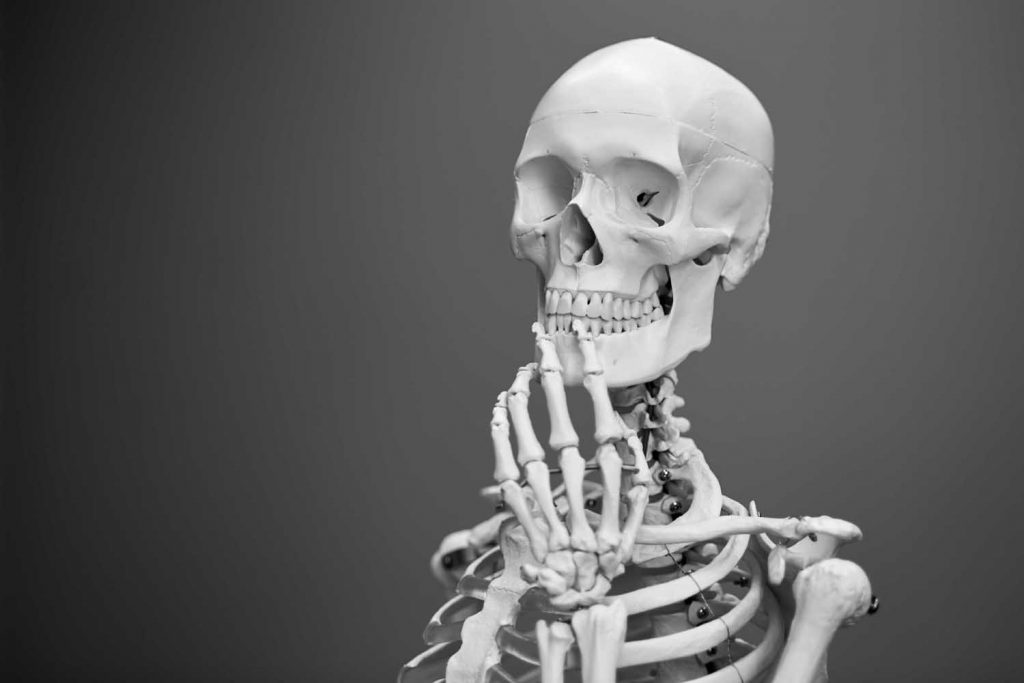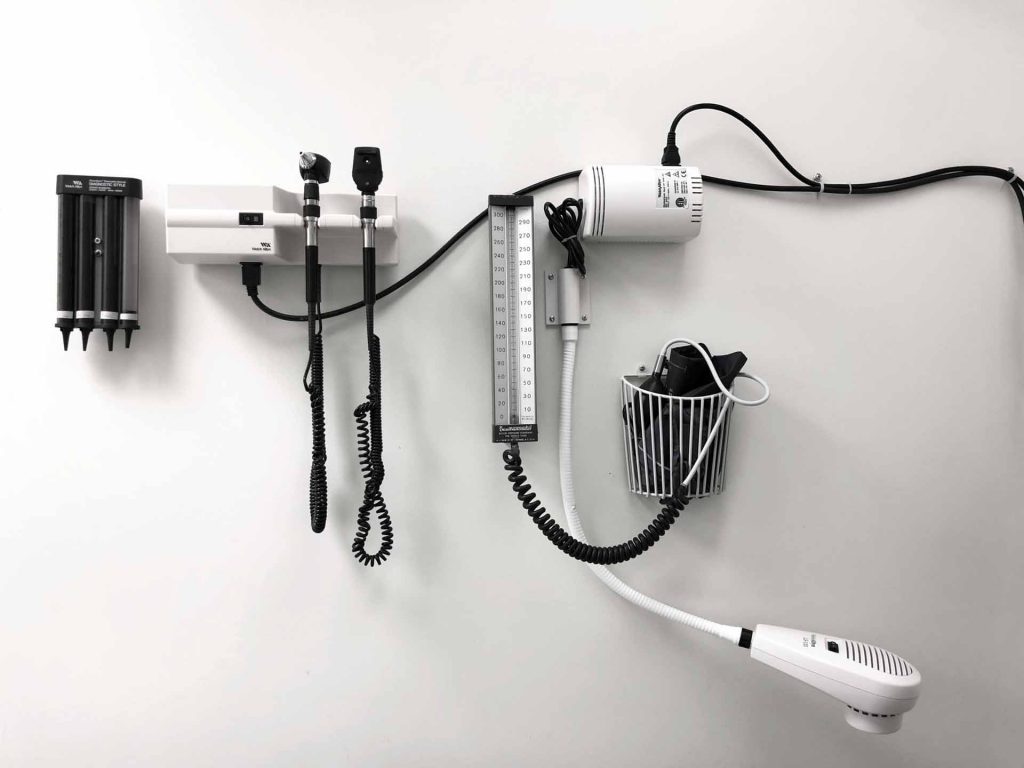Arthritis (Condition)
Arthritis and other rheumatic diseases are characterized by pain, swelling, and limited movement in joints and connective tissues in the body.
Avascular Necrosis Back and Neck Pain
Low back pain can range from mild, dull, annoying pain, to persistent, severe, disabling pain in the lower back. Pain in the lower back can restrict mobility and interfere with normal functioning. Neck pain is pain that occurs in the area of the seven cervical vertebrae in the neck area. Because of its location and range of motion, the neck is often left unprotected and subject to injury.
Benign Bone Tumors
There are many benign bone tumors that require clinical care by a physician or other healthcare professional. Listed in the directory below are some, for which we have provided a brief overview.
Bone Cancers
There are many bone cancers that require clinical care by a physician or other health care professional. Listed in the directory below are some, for which we have provided a brief overview.
Calluses and Corns
Calluses are protective pads made up of the thickened upper layer of skin due to repeated rubbing of the area. Corns are small calluses that develop on the top of the toes due to pressure or rubbing against shoes or other toes.
Carpal Tunnel Syndrome
Carpal tunnel syndrome is a condition in which the median nerve is compressed as it passes through an opening from the wrist to the hand called the carpal tunnel.

Chondroblastoma
Sometimes called Codman’s tumor, a chondroblastoma is a rare type of benign bone tumor that originates from cartilage.
Chondrosarcoma
Chondrosarcoma is a type of bone cancer that develops in cartilage cells.
Congenital Hand Deformities
Congenital anomalies are deformities that are present at birth.
Cubital Tunnel Syndrome
Cubital tunnel syndrome feels similar to the pain that occurs from hitting the “funny” bone in your elbow. The “funny” bone in the elbow is actually the ulnar nerve, a nerve that crosses the elbow (the ulnar nerve begins in the side of the neck and ends in the fingers).
Dupuytren's Contracture
Dupuytren’s contracture, also called Dupuytren’s disease, usually begins with a thickening of the skin in the palm of the hand, which may develop into a hard lump or thick band that eventually could cause the fingers to contract, or pull into the palm.
Elbow Pain and Problems
Common elbow problems include the following: arthritis -common forms of arthritis, bursitis, fractures, and injury.
Enchondroma
An enchondroma is a type of benign (non-cancerous) bone tumor that originates from cartilage.
Ewing Sarcoma
Ewing sarcoma is a cancer that occurs primarily in the bone or soft tissue.
Fibrous Dysplasia
Fibrous dysplasia is a chronic disorder in which bone expands due to abnormal development of fibrous tissue, often resulting in uneven growth of bones, pain, brittle bones, or bone deformity.
Foot Pain and Problems
Foot pain is often caused by improper foot function. Improperly fitted shoes can worsen and, in some cases, cause foot problems.
Giant Cell Tumor
A giant cell tumor is one that is made up of a large number of benign (non-cancerous) cells that form an aggressive tumor – usually near the end of the bone near a joint.
Hand Pain and Problems
There are many common hand problems that can interfere with activities of daily living (ADLs),
Hip Fracture
A hip fracture is a break in the femur (thigh bone) of the hip joint.
Hip Problems
The following are some of the most common hip problems: arthritis, osteoarthritis, rheumatoid arthritis, traumatic arthritis, avascular necrosis, bursitis, and hip pointer.
Knee Pain and Problems
Many knee problems are a result of the aging process and continual wear and stress on the knee joint (i.e., arthritis). Other knee problems are a result of an injury or a sudden movement that strains the knee. Common knee problems include the following: sprained or strained knee ligaments and/or muscles, torn cartilage, tendonitis, and arthritis.
Knee Pain and Problems
Many knee problems are a result of the aging process and continual wear and stress on the knee joint (i.e., arthritis). Other knee problems are a result of an injury or a sudden movement that strains the knee. Common knee problems include the following: sprained or strained knee ligaments and/or muscles, torn cartilage, tendonitis, and arthritis.

Kyphosis
A normal spine, when viewed from behind appears straight. However, a spine affected by kyphosis shows evidence of a forward curvature of the back bones (vertebrae) in the upper back area, giving a “humpback” appearance.
Lateral Epicondylitis (Tennis Elbow)
Lateral epicondylitis, also known as tennis elbow, is characterized by pain in the back side of the elbow and forearm, along the thumb side when the arm is alongside the body with the thumb turned away. The pain is caused by damage to the tendons that bend the wrist backward away from the palm.
Ligament Injuries to the Knee
There are four major ligaments in the knee. Ligaments are elastic bands of tissue that connect bones to each other and provide stability and strength to the joint. The four main ligaments in the knee connect the femur (thighbone) to the tibia (shin bone), and include the following: the anterior cruciate ligament (ACL), the posterior cruciate ligament (PCL), the medial collateral ligament (MCL), and the lateral collateral ligament (LCL).
Low Back Pain
Low back pain can range from mild, dull, annoying pain, to persistent, severe, disabling pain in the lower back. Pain in the lower back can restrict mobility and interfere with normal functioning.
Lumbar Disc Disease (Herniated Disc)
As we age, the intervertebral disc may lose water and become dried out. As this happens, the disc compresses. This may lead to the deterioration of the tough outer ring allowing the nucleus, or the inside of the ring, to bulge out. This is considered a bulging disc.
Lumbar Strain (Weight Lifter's Back)
A lumbar strain is an injury to the lower back, which results in damaged tendons and muscles that spasm and feel sore.
Medial Epicondylitis (Golfer's and Baseball Elbow)
Medial epicondylitis, also known as golfer’s elbow, baseball elbow, suitcase elbow, or forehand tennis elbow, is characterized by pain from the elbow to the wrist on the palm side of the forearm.
Myeloma Bone Disease / Multiple Myeloma
Myeloma bone disease is cancer that affects certain white blood cells called plasma cells.
Neck Pain
The neck is located between the head and the shoulders. Because of its location and range of motion, it is often left unprotected and subject to injury
Osteoarthritis
Osteoarthritis, the most common form of arthritis, is a chronic, degenerative, joint disease that affects mostly middle-aged and older adults. Osteoarthritis is characterized by the breakdown of joint cartilage and adjacent bone in the neck, lower back, knees, hips, and/or fingers.
Paget's Disease of the Bone
Paget’s disease of the bone is a chronic bone disorder in which bones become enlarged and deformed. Bone may become dense, but fragile, because of excessive breakdown and deformation of bone.
Osteosarcoma
Osteosarcoma is a type of bone cancer that develops in the osteoblast cells that form the outer covering of bone.
Osteoporosis (Condition)
Osteoporosis, or porous bone, is a disease in which there is a loss of bone mass and destruction of bone tissue. This process causes weakening of the bones and makes them more likely to break. The bones most often affected are the hips, spine, and wrists
Osteogenesis Imperfecta
Osteogenesis imperfecta (OI), also known as brittle-bone disease, is a genetic (inherited) disorder characterized by bones that break easily without a specific cause.
Osteochondroma
Also called osteocartilaginous exostoses, osteochondroma is an overgrowth of cartilage and bone near the end of the bone near the growth plate
Patellar Tendonitis (Jumper's Knee)
Patello
femoral Stress Syndrome (Runner's Knee)
femoral Stress Syndrome (Runner’s Knee)
Pelvis Problems
Two of the more common pelvic problems include pelvic fractures and osteitis pubis.
Repetitive Motion Injury
Repetitive motion injuries, also called repetitive stress injuries, are temporary or permanent injuries to muscles, nerves, ligaments, and tendons caused by performing the same motion over and over again
Rotator Cuff Injury
An injury to the rotator cuff, such as a tear, may happen suddenly when falling on an outstretched hand or develop over time due to repetitive activities.
Sciatica
Sciatica, also known as lumbar radiculopathy, is a pain that originates along the sciatic nerve, which extends from the back of the pelvis down the back of the thigh.
Scoliosis
A spine affected by scoliosis shows evidence of a lateral, or sideways, curvature, and a rotation of the back bones (vertebrae), giving the appearance that the person is leaning to one side.
Shoulder Dislocation
Dislocation of the shoulder means the displacement of the upper arm bone (humerus) out of the shoulder joint.
Shoulder Pain and Problems
Common shoulder problems include the following: dislocation, separation, bursitis, impingement syndrome, tendonitis, rotator cuff tear, adhesive capsulitis (frozen shoulder), and fracture.
Shoulder Tendonitis
Tendonitis of the shoulder is an inflammation of the rotator cuff and/or biceps tendon.
